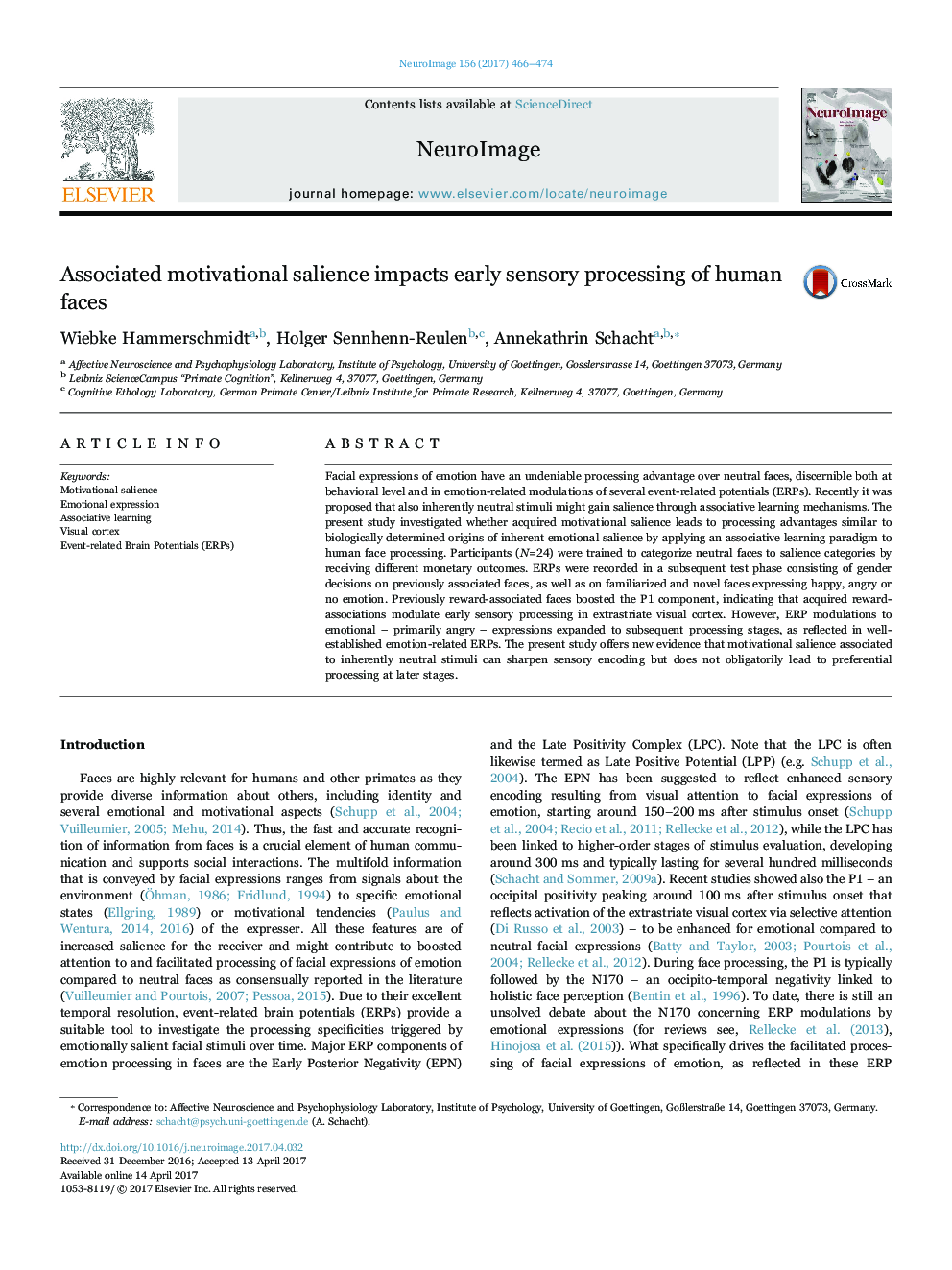| کد مقاله | کد نشریه | سال انتشار | مقاله انگلیسی | نسخه تمام متن |
|---|---|---|---|---|
| 5631044 | 1580854 | 2017 | 9 صفحه PDF | دانلود رایگان |
- We compare ERP effects of inherent and associated salience during face processing.
- Acquired reward associations amplify the P1 component to inherently neutral faces.
- ERP effects to emotional expressions (P1, EPN, LPC) are most pronounced for anger.
- Generators for P1 effects to reward-associated and angry faces are located in BA19.
Facial expressions of emotion have an undeniable processing advantage over neutral faces, discernible both at behavioral level and in emotion-related modulations of several event-related potentials (ERPs). Recently it was proposed that also inherently neutral stimuli might gain salience through associative learning mechanisms. The present study investigated whether acquired motivational salience leads to processing advantages similar to biologically determined origins of inherent emotional salience by applying an associative learning paradigm to human face processing. Participants (N=24) were trained to categorize neutral faces to salience categories by receiving different monetary outcomes. ERPs were recorded in a subsequent test phase consisting of gender decisions on previously associated faces, as well as on familiarized and novel faces expressing happy, angry or no emotion. Previously reward-associated faces boosted the P1 component, indicating that acquired reward-associations modulate early sensory processing in extrastriate visual cortex. However, ERP modulations to emotional - primarily angry - expressions expanded to subsequent processing stages, as reflected in well-established emotion-related ERPs. The present study offers new evidence that motivational salience associated to inherently neutral stimuli can sharpen sensory encoding but does not obligatorily lead to preferential processing at later stages.
Journal: NeuroImage - Volume 156, 1 August 2017, Pages 466-474
